All products featured are independently chosen by us. However, SoundGuys may receive a commission on orders placed through its retail links. See our ethics statement.
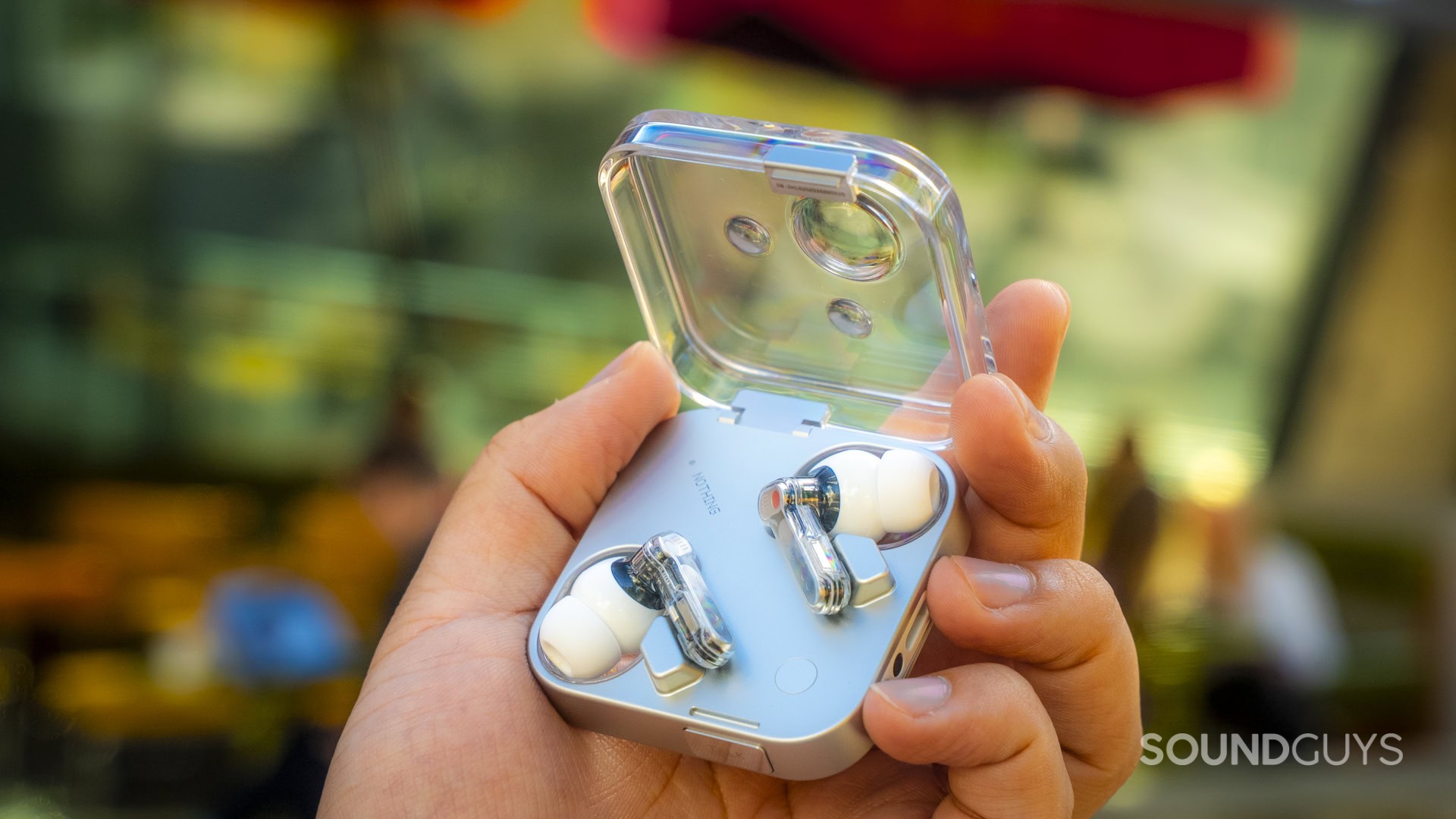

Nothing Ear (3) review: Great earbuds with a not-so Super Mic
September 25, 2025


Nothing Ear (3)
Weight: 71g
Nothing may be bad at counting — they started with the Ear (1), then released the Ear (2), then released the Ear from last year, and now they are back to numbers again with the Ear (3) — but at least they have been better at making earbuds than deciding on a naming convention for them. Known for their excellent sound quality, robust companion apps, and flashy design aesthetics, Nothing’s latest earbuds evolve the formula with metal accents and a legitimately novel trick. Press a button on the charging case, and it becomes a microphone to talk into for your calls and voice notes. Could this finally be the do-it-all answer for everyone tired of shouting “CAN YOU HEAR ME?” into their earbuds during windy walks or crowded coffee shops?
The Nothing Ear (3) are ideal for first-time Nothing buyers who appreciate stylish design and want solid wireless earbuds with strong ANC, excellent app customization, and good sound quality. They’re also suited for Nothing phone (3) users who can take advantage of the exclusive features. However, existing Nothing earbud owners should skip this upgrade, as you’re mainly paying extra for cosmetics and a microphone built into the charging case that not everyone will find useful.
This article was published on September 25, 2025, and this is the first version of the article. Updates will follow as the market changes.
What’s it like to use the Nothing Ear (3)?
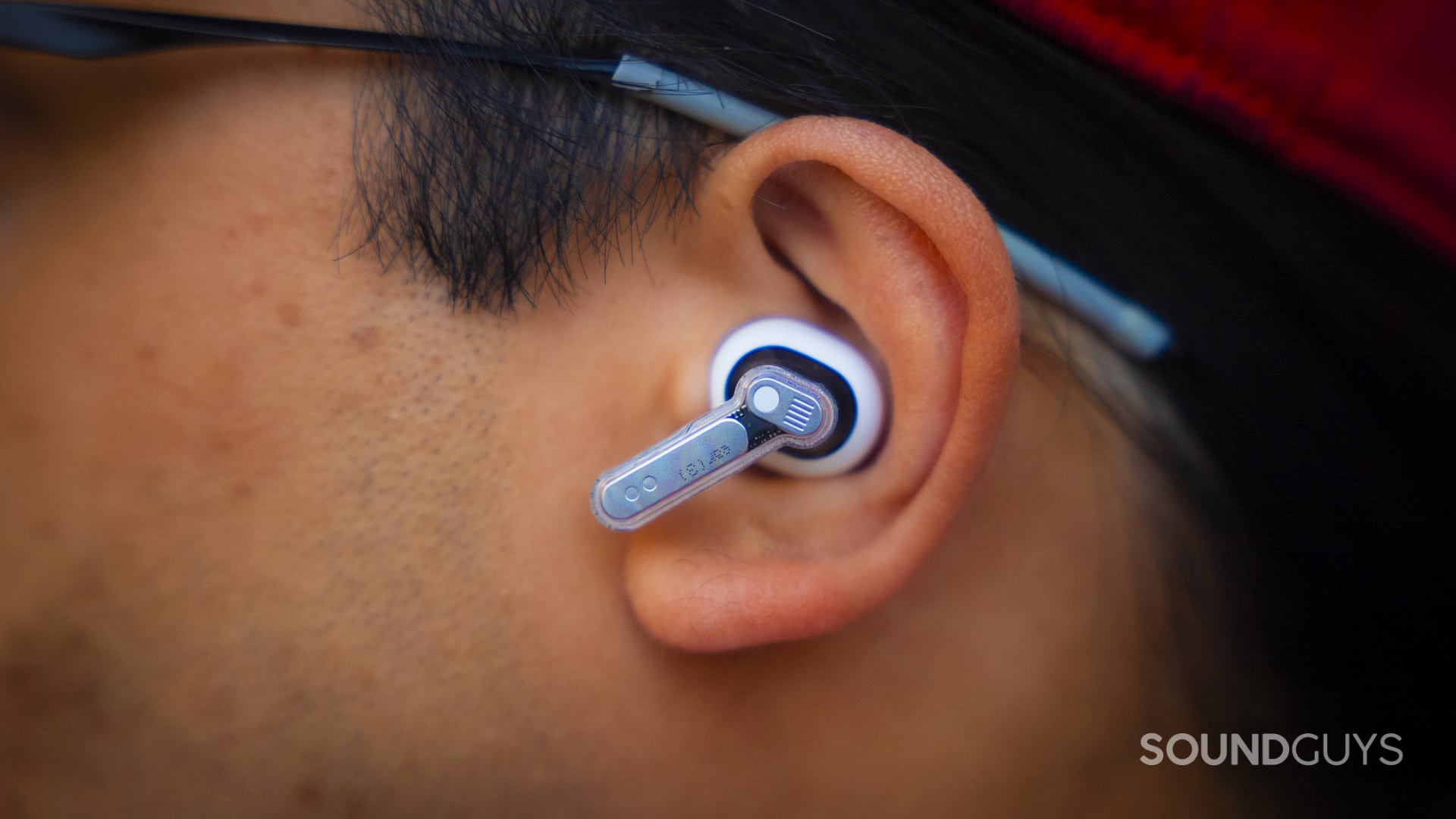
Nothing has retained the signature form factor from prior generations of the Ear and added a few refinements. You still get the transparent lid for the top half of the square charging case, but the bottom half is now encased in recycled aluminum instead of plastic. The earbuds themselves also have some custom metal accents visible through the transparent casing. Overall, it feels like a more durable, premium package that better matches the design philosophy of the company’s Headphone (1) in standing out from the crowd. Still, it does make the earbuds a few grams heavier.
Both the earbuds and the charging case of the Nothing Ear (3) are IP54-rated for resistance to dust, sweat, and light rain. Nothing has also added a discreet lanyard loop to one side of the case, a design element carried over from its sub-brand CMF Buds. I have never personally wanted my earbuds dangling precariously from a lanyard attached to my belt or backpack, but hey, maybe you do.
Comfort remains a strong suit. The earbuds use the same general shape as before, but the stem angle sits lower, which I found helps keep them more stable in my ears than the last model. The included silicone tips (XS/S/M/L) provide a secure but not overly tight seal. I was able to wear them for two-hour stretches without fatigue or needing to adjust the fit, though your mileage may vary depending on ear shape.
The Nothing Ear (3) uses pinch controls along the indentation of the stems to control the earbuds. All the controls are adjustable within the Nothing X app, except for Single pinch, but below is a chart of the default controls.
| Action | Control |
|---|---|
Single pinch | Play/Pause |
Double pinch | Skip forward |
Triple pinch | Skip back |
Pinch & hold | Noise control |
Double Pinch & hold | No action |
I do wish there were more intuitive volume controls on the earbuds. I assigned pinch and hold to volume up and double pinch and hold to volume down, but it can be a little cumbersome to keep pinching for each increment in volume adjustment.
What are the best features of the Nothing Ear (3)?
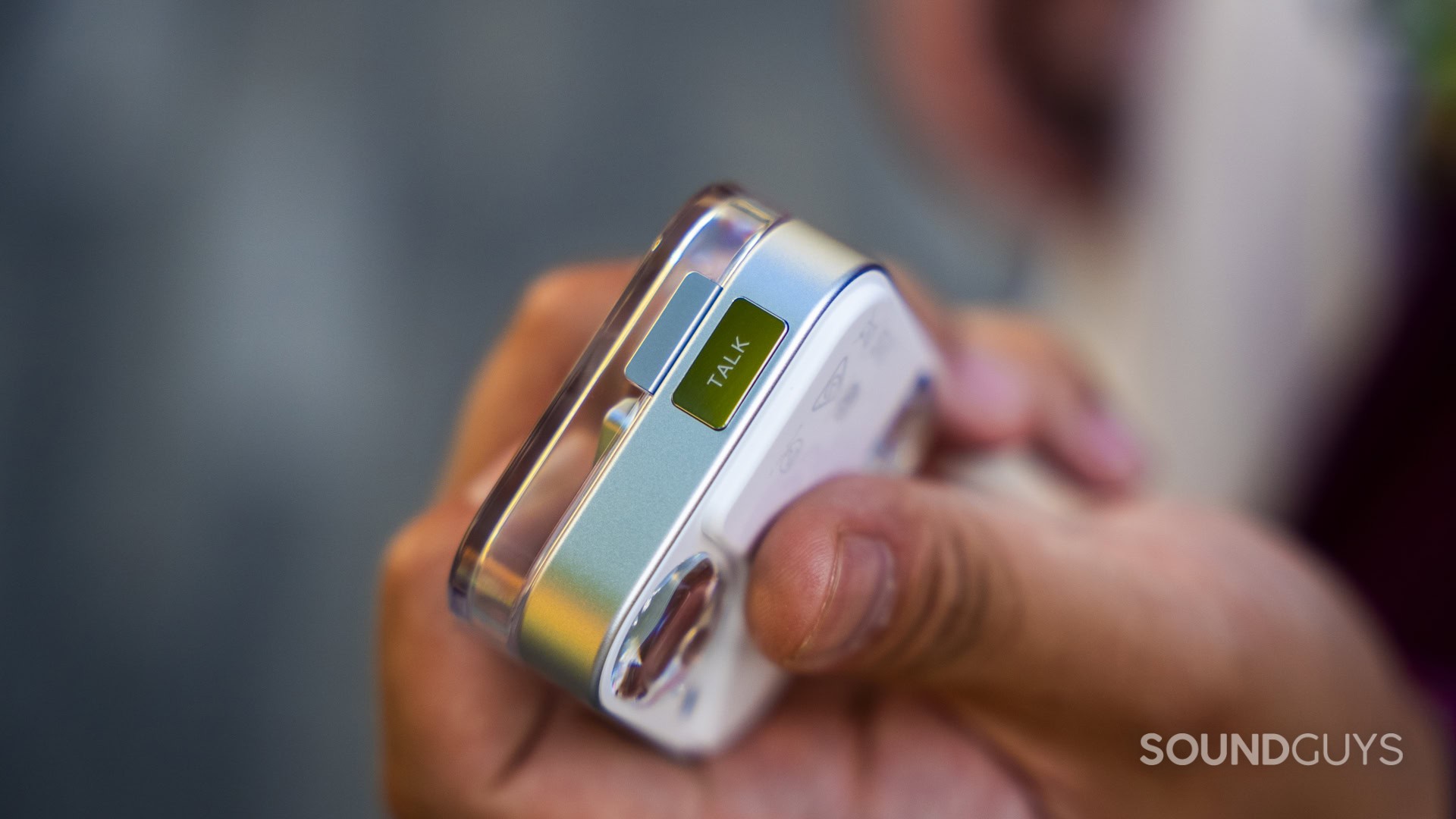
The Super Mic is the Ear (3)’s headline act. You can press a large Talk button on the charging case to activate two MEMS microphones, using beamforming to isolate your voice from background noise up to 95 dB. Hold the button for quick voice notes or double-press to lock it on for longer calls. While Nothing positions this primarily for phone calls and online meetings, the execution feels awkward in practice—holding up a charging case like a walkie-talkie during conversations is neither intuitive nor particularly comfortable, especially when earbuds or your phone offer more natural hands-free alternatives.
The system works across most major apps, including Zoom, Teams, Google Meet, and WhatsApp, though compatibility isn’t universal. It won’t work with standard Android camera apps, only those that allow manual microphone selection. Even with compatible apps, I noticed audio lag when recording video. The feature also isn’t optimised for quick in-app voice messages—a missed opportunity given how often leaving a WhatsApp voice note is faster than typing.
Where I found Super Mic genuinely excels is in voice memo recording. For professionals who need to quickly capture fleeting thoughts, pressing the case button proved more convenient than scrambling for pen and paper. Nothing Phone users get an exclusive Essential Space feature that automatically transcribes Super Mic recordings into text notes. However, this limitation isn’t as restrictive as it initially appears—I achieved similar functionality by pairing the Super Mic with my Samsung Galaxy device’s built-in voice recorder, which syncs with the Samsung Interpreter’s transcription.
While Super Mic represents an innovative concept, its most compelling use case differs significantly from Nothing’s marketing focus, and the core transcription benefit extends beyond the Nothing ecosystem with some creativity.
Aside from the Super Mic, the Nothing X app remains one of the best companion apps in the wireless audio space. The standout feature is still the advanced equalizer—you get both a simple 3-band EQ for casual users and a full parametric equalizer for audio nerds who want to dial in specific frequencies with adjustable Q values. The Personal Sound feature conducts a hearing test to create a custom profile based on your hearing sensitivity, but I found that I actually preferred the default tuning to it.
You’ll also find an ear tip fit test, Find My Earbuds with sound playback, dual-device connection toggle, and firmware updates. The app also lets you share custom EQ profiles via QR codes, just like was introduced with the Headphone (1). One quirk: enabling dual-device connection slightly delays Super Mic activation since the earbuds can only maintain one microphone path at a time. Nothing defaults this to off, prioritizing Super Mic performance over multi-device convenience.
How does the Nothing Ear (3) connect?
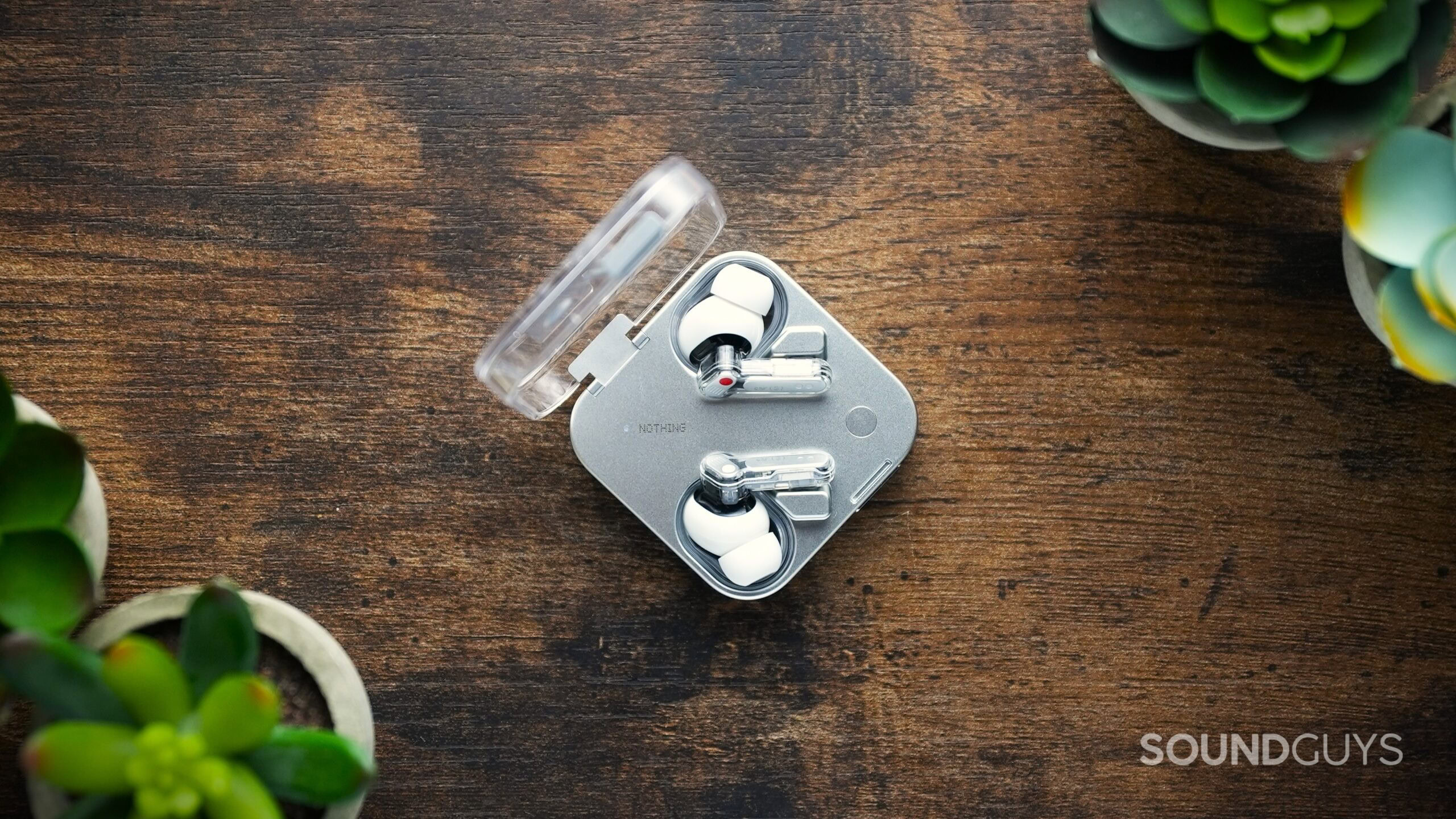
The Nothing Ear uses Bluetooth 5.4 to connect to devices, which future-proofs it to upcoming technologies such as Auracast. The earbuds support the AAC and SBC Bluetooth codecs, as well as LDAC, which delivers a higher streaming quality up to 990 kbps 24 bit/96kHz on supported devices. There is also a low-latency mode that brings the end-to-end delay down to under 120 milliseconds for gaming and video, and dual-device connection allows pairing to two devices at once.
For pairing, Nothing includes Google Fast Pair support on Android, Microsoft Swift Pair on Windows, and standard Bluetooth pairing on iOS. The Ear (3) is compatible with Android 6.0+, iOS 13+, and Nothing OS.
To pair the Nothing Ear (3):
- Place both buds in the case and leave the lid open.
- Press and hold the pairing button until the status LED blinks
- Select “Nothing Ear (3)” in Bluetooth settings.
How long do the Nothing Ear (3)’s battery last?
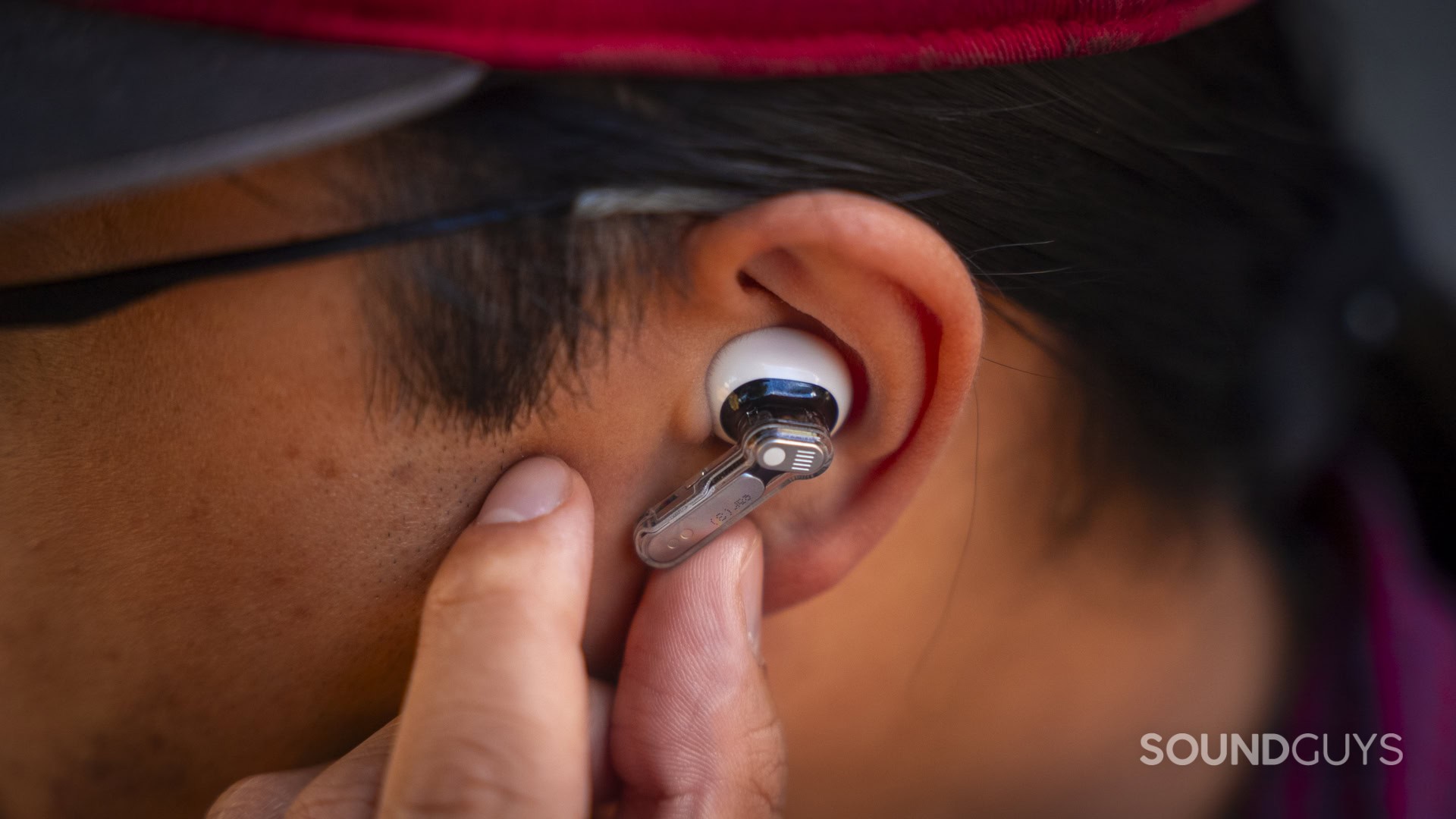
In our testing, the Nothing Ear (3) lasted 5 hours and 12 minutes with ANC on, and the company claims that payback extends to 22 hours with the case.
The charging case supports wireless charging at up to 2.5W. For faster charging, you can power up the case over USB-C, which, Nothing says, can give you 10 hours of listening time from only 10 minutes.
How well do the Nothing Ear (3) cancel noise?
Loading chart ...
Like with last year’s model, Nothing advertises up to 45dB of noise attenuation with the Ear (3). While we still aren’t seeing those results in our testing lab, we are seeing some meaningful improvements. Our testing shows up to 35dB of attenuation from the ANC in the low frequencies and then up to 38dB of attenuation in the high frequencies, a region where ANC tends not to make much of a difference over and above the passive isolation with wireless earbuds. Overall, this reduces the loudness of most sounds by around 82%, which is 7% more than the Nothing Ear (2024) average, placing these close to some of the best noise canceling earbuds. I will mention, however, that the ANC system did struggle with even the slightest amount of wind while walking in the downtown area, which may be more or less of a concern depending on where you live.
How do the Nothing Ear (3) sound?
The Nothing Ear (3) sound fun and energetic with great width, but the bass-heavy, V-shaped tuning won’t suit everyone without EQ adjustments.
Multi-Dimensional Audio Quality Scores (MDAQS)
The chart below shows how the Multi-Dimensional Audio Quality Score (MDAQS) algorithm from HEAD acoustics assesses the sound of the Nothing Ear (3). The sound quality is rated on a scale from 1.0 (very bad) to 5.0 (very good).

Our simulated panel of listeners rates the Nothing Ear (3) very highly across the board. The low distortion (as indicated by the high score of 4.4) is particularly impressive. It matches my experience of hearing little to no distortion while listening at high levels, even with the added bass emphasis. An overall score of 4.7 is in the high range for wireless earbuds in this price range we’ve tested. Most people will like how Nothing Ear (3) sounds straight out of the box.
- Timbre (MOS-T) represents how faithfully the headphones reproduce the frequency spectrum and temporal resolution (timing information).
- Distortion (MOS-D) represents non-linearities and added noise: higher scores mean cleaner reproduction.
- Immersiveness (MOS-I) represents perceived source width and positioning: how well virtual sound sources are defined in three-dimensional space.
See here for an explanation of MDAQS, how it works, and how it was developed.
Reviewer’s notes
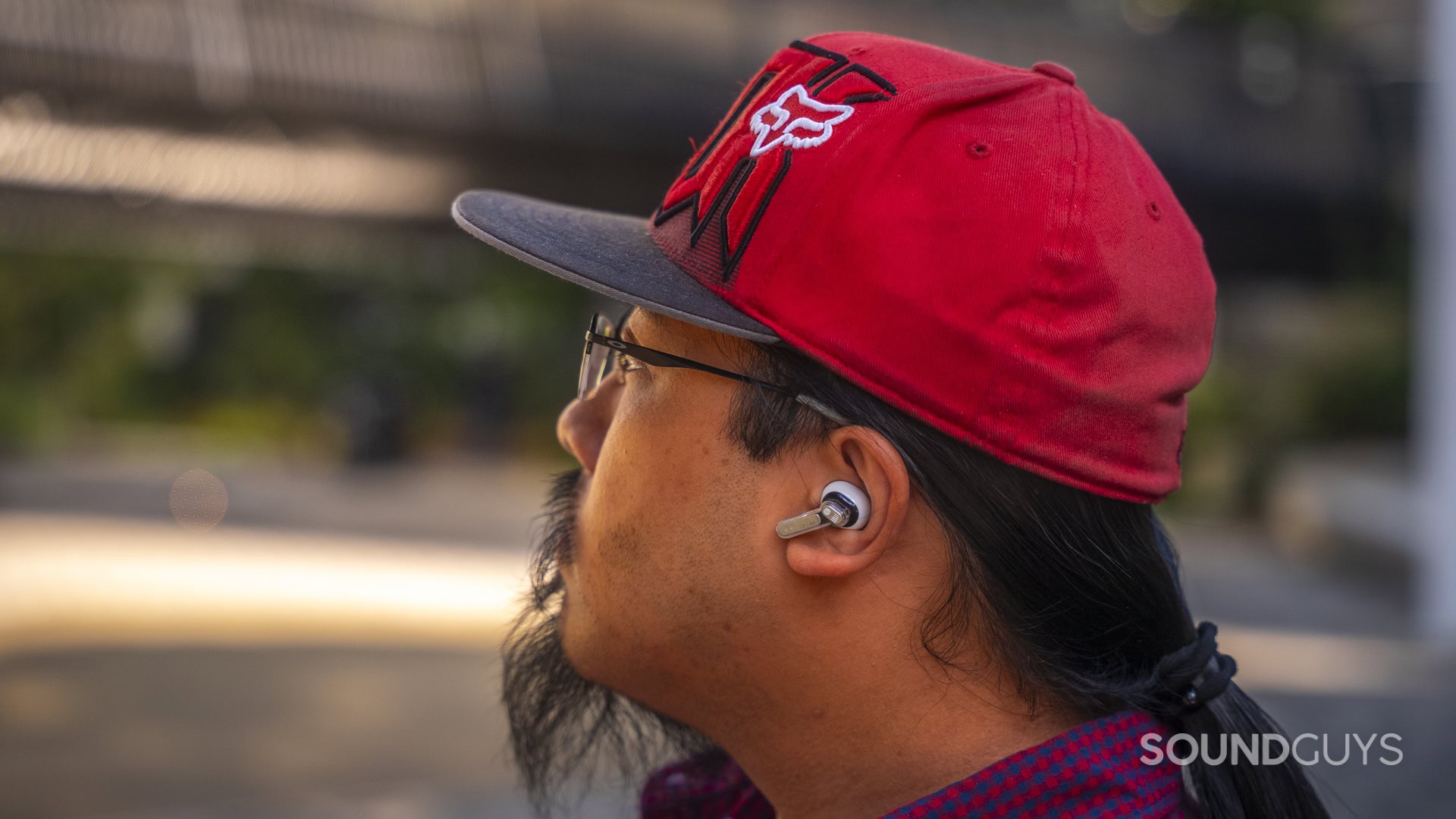
Editor’s note: this review uses a hover-enabled glossary to describe sound quality based on a consensus vocabulary. You can read about it here.
Objective Measurements
Loading chart ...
Looking at the chart above, the Nothing Ear (3) has a frequency response that amplifies low frequencies much more than our house curve looks for. The midrange between 200-1000Hz is also slightly underemphasized, followed by some slight overemphasis in the treble region. Overall, it is a more extreme V-shaped sound signature compared to previous Nothing Ear models, but nothing you can’t fix or tweak using the custom parametric equalizer.
More Bass EQ Preset
Loading chart ...
The More Bass preset does exactly what it says: it adds more bass emphasis, or at least the perception of it. It cuts the subbass and treble emphasis to allow the low-end peak at ~65Hz to be more pronounced in the mix.
More Treble EQ Preset
Loading chart ...
The More Treble preset also does exactly what it says: it adds more treble emphasis, about 3dB more at 3 and 7 kHz. It also boosts frequencies above 12kHz, though most listeners won’t be able to hear much difference in that ultra-high range.
Voice EQ Preset
Loading chart ...
The Voice preset cuts the emphasis on bass and treble and raises the midrange a bit for a flatter frequency response overall. This helps bring vocals to the forefront, but I would not recommend it for music, as instruments sound quite muffled and hollow. It is much better suited for podcasts or dialogue-only content.
Loading chart ...
I actually prefer the listening experience with ANC off, as it slightly reduces the emphasis on bass and treble while raising the upper mids a notch. Overall, it’s not a drastic change.
As you can see in the MDAQS chart below, the scores with ANC on are slightly lower than with ANC off (aside from Immersiveness), but not so different that you will necessarily notice.
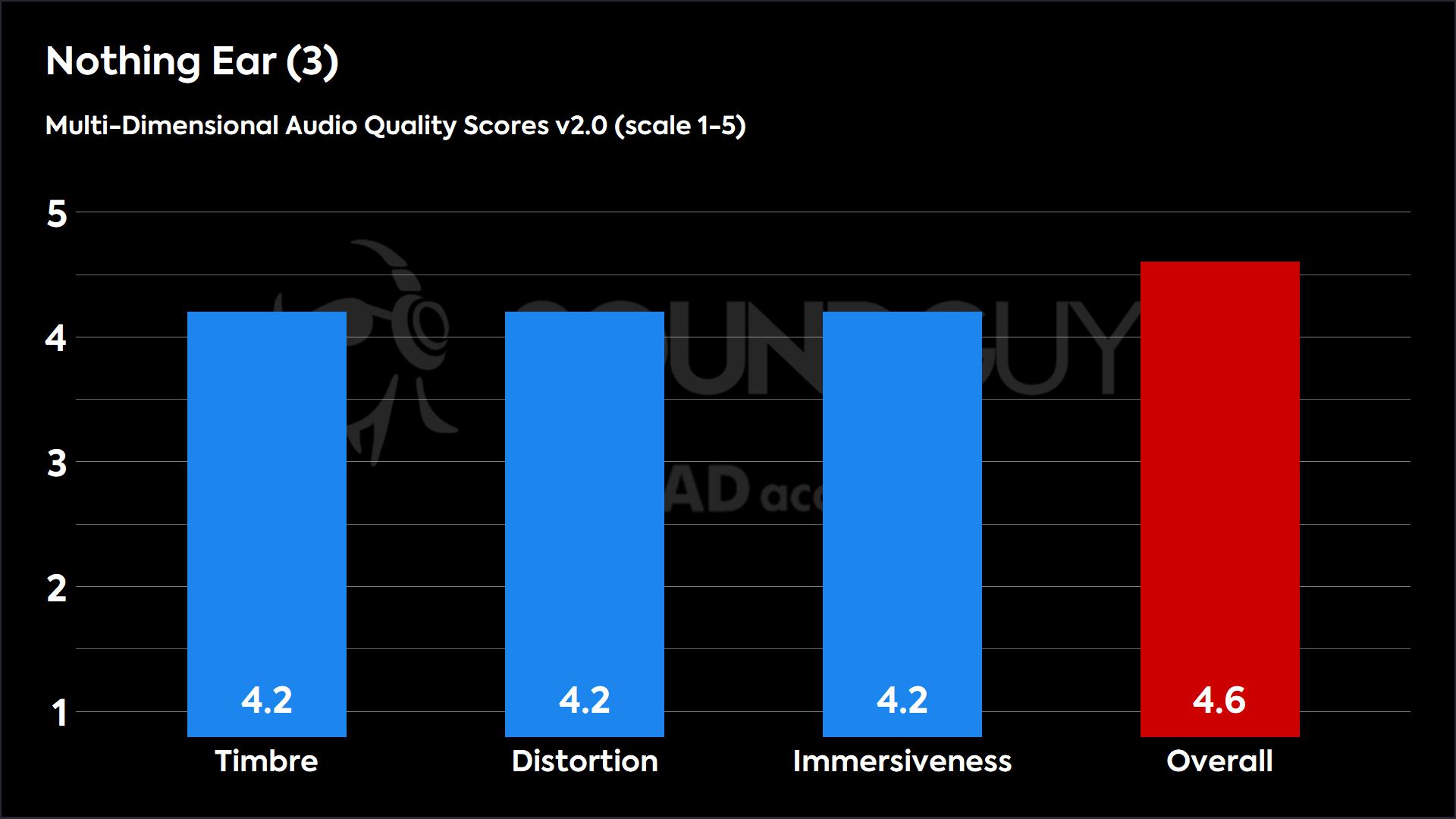
Can you use the Nothing Ear (3) for phone calls?
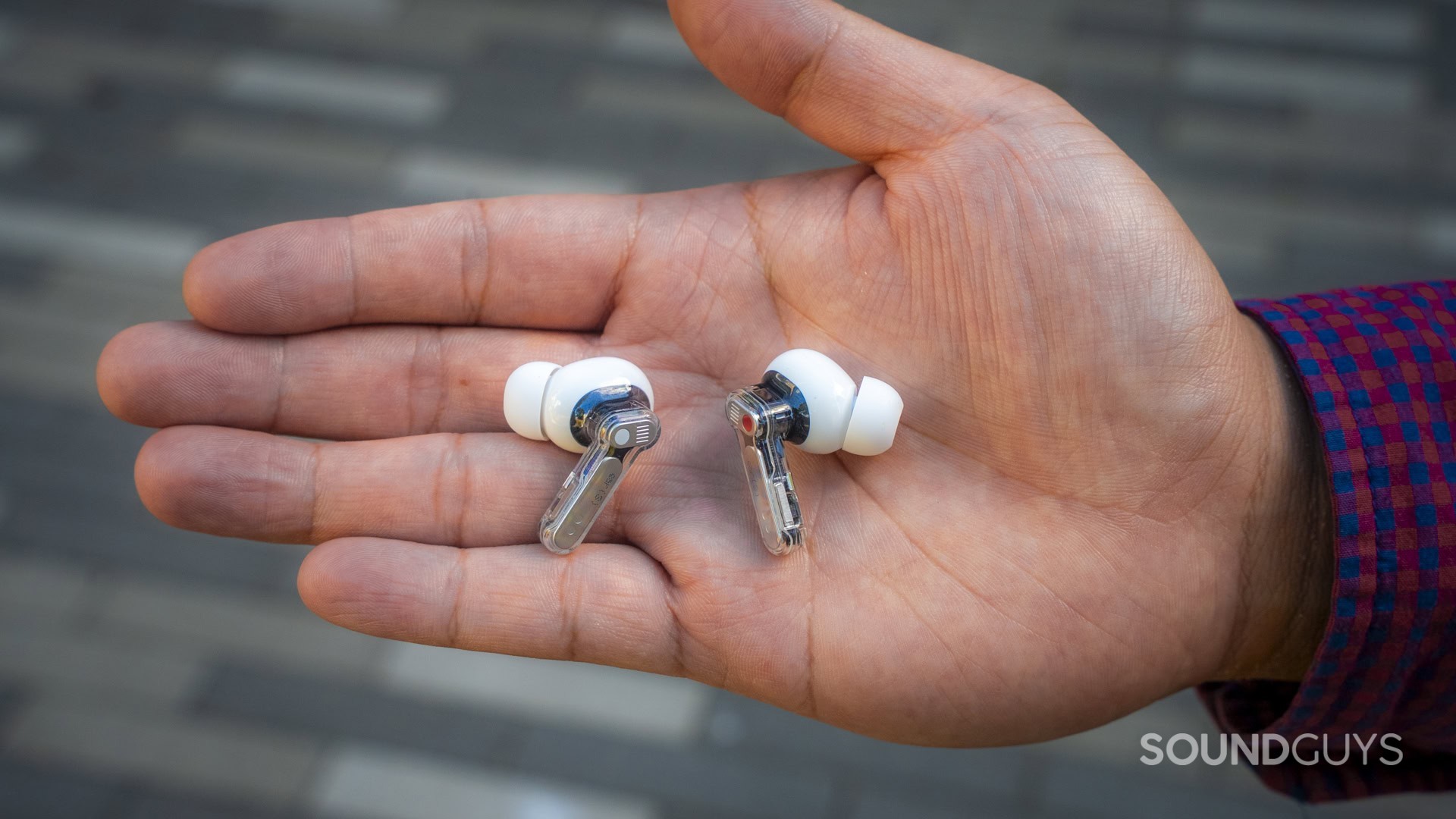
As I already mentioned, the Nothing Ear (3) has two microphone systems: the Super Mic built into the charging case and the microphones in the earbuds. Before listening to the mic samples below, there is an important caveat regarding the earbuds. Each earbud combines three directional microphones with a bone-conduction VPU that senses micro-vibrations from your jaw and ear canal. Because our testing head doesn’t have bones, the mic samples below do not reflect a complete picture of the earbuds’ microphone quality.
That said, we can compare the raw microphone performance to that of the Super Mic embedded in the case. You can listen to samples of them both below, but the “Super Mic” doesn’t sound so super to my ears. There is less clipping with the Super Mic, but the voice quality sounds as muffled and robotic as the earbuds. If you were hoping the Nothing Ear (3) could replace your lav or handheld mic for content creation or interviews in the wild, you will likely be disappointed.
Nothing Ear (3) Super Mic demo (Ideal conditions):
Nothing Ear (3) microphone demo (Ideal conditions):
Which microphone sounds better to you?
Nothing Ear (3) Super Mic demo (Office conditions):
Nothing Ear (3) Super Mic demo (Street conditions):
Nothing Ear (3) Super Mic demo (Windy conditions):
Nothing Ear (3) Super Mic demo (Reverberant conditions):
Nothing’s marketing materials claim that the Super Mic sounds “rich and natural, and calls stay totally clear in noisy environments.” As you can hear in the samples above, that’s quite a stretch. While the AI noise rejection kicks in to silence background distractions, speech sounds very muffled, like I’m being smothered by a pillow.
Nothing Ear (3) microphone demo (Office conditions):
Nothing Ear (3) microphone demo (Street conditions):
Nothing Ear (3) microphone demo (Windy conditions):
Nothing Ear (3) microphone demo (Reverberant space):
In my usage, the earbuds’ microphone was less affected by wind and environmental noise than the above samples would have you believe. That is because bone-conduction signals are less affected by such things, and that system was better at differentiating between my voice and other noise than the microphones themselves.
Should you buy the Nothing Ear (3)?
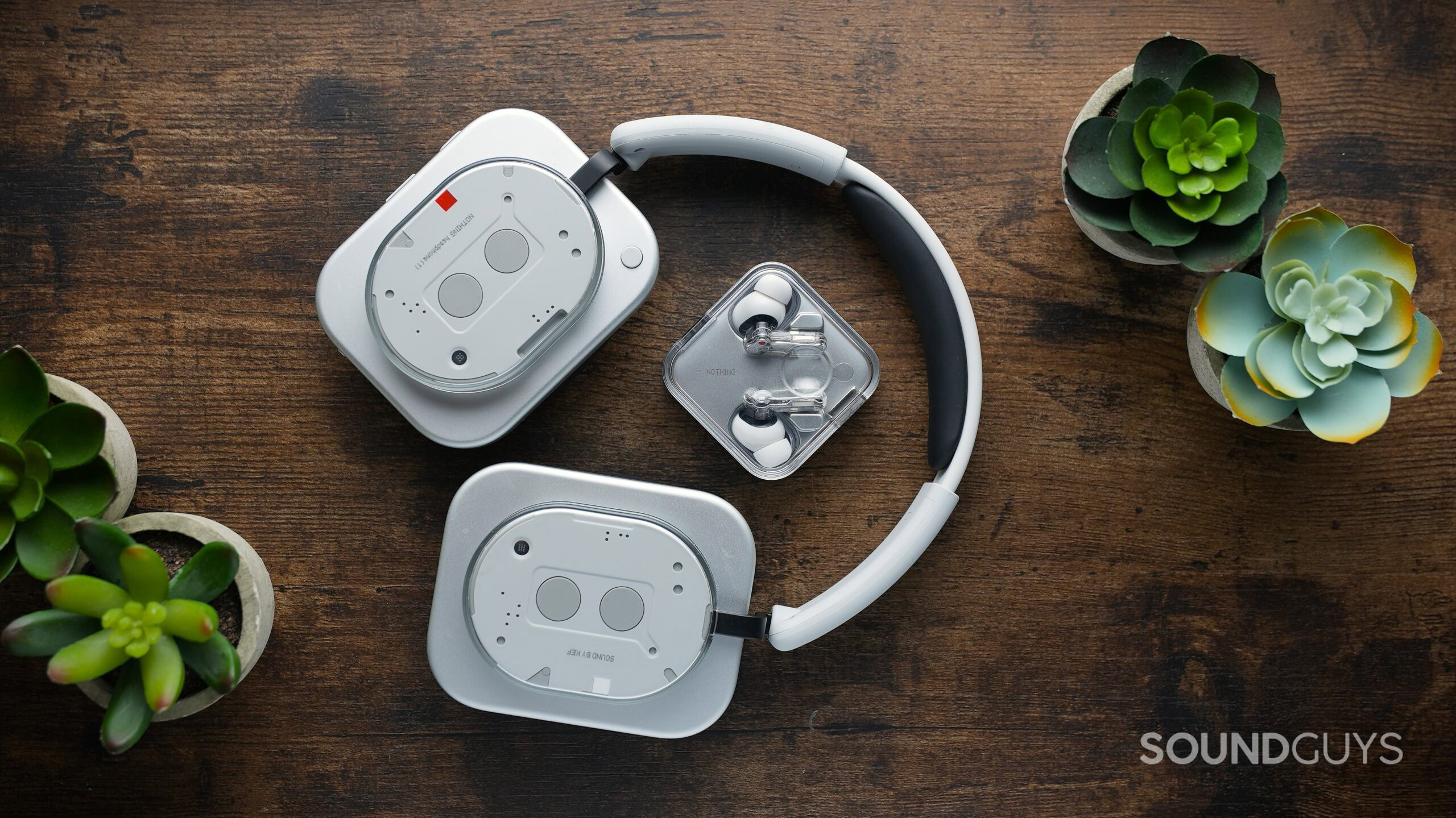
So, the Nothing Ear (3) are comfortable earbuds that deliver good sound quality with excellent customization via the app, and have strong noise cancelation. But so did the cheaper previous models. So, you’re essentially spending an extra $30 here for a “Super” Mic feature that is awkward to use for phone calls and can sound muffled even when you do, and a prettier metal case. While the Super Mic is an innovative idea and works well for voice memos (especially with transcription), it feels like a feature that needed a bit more development time, in terms of user experience, app compatibility, and background noise rejection. Hopefully, some of those things can be improved with future firmware updates.
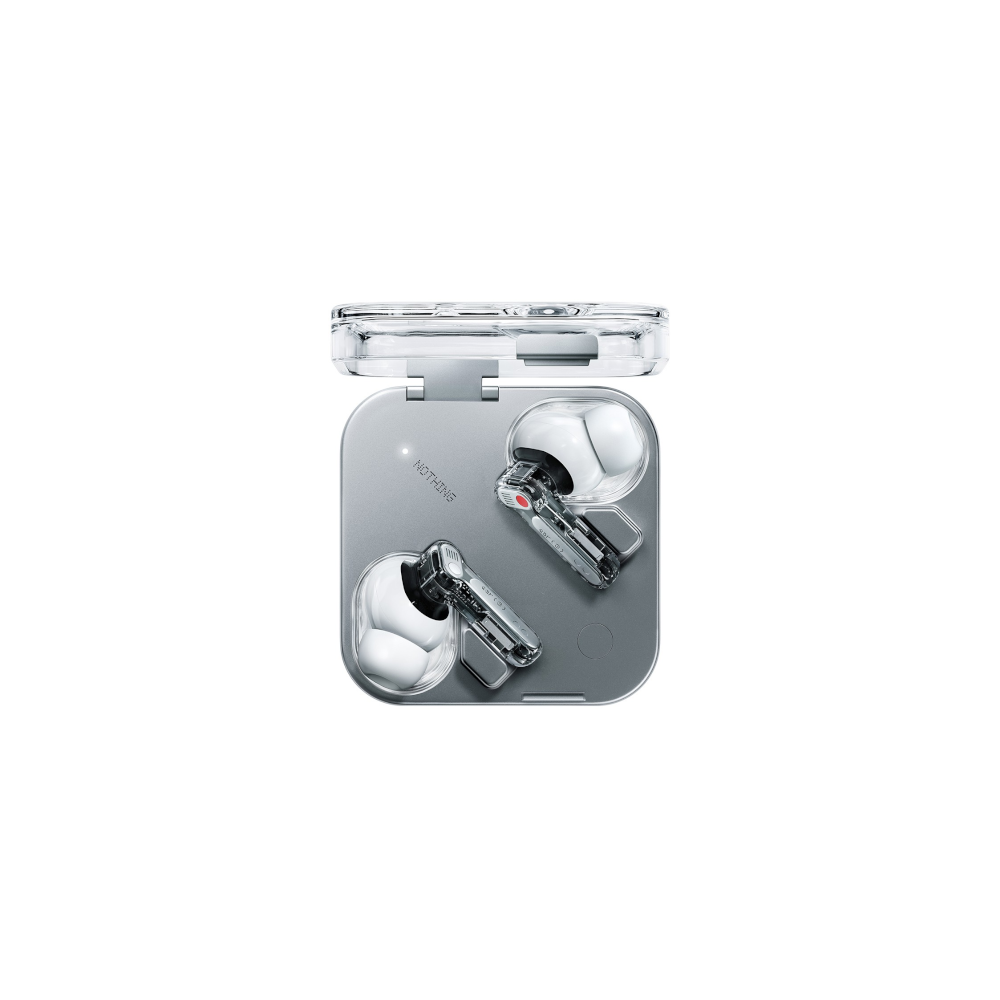

If you already own recent Nothing earbuds, I don’t think the Ear (3) offers enough meaningful improvements to justify an upgrade. However, if you’re new to the Nothing ecosystem and love the look and design, these deliver the same great score experience you’d expect, just with flashy metal accents.
What should you get instead?
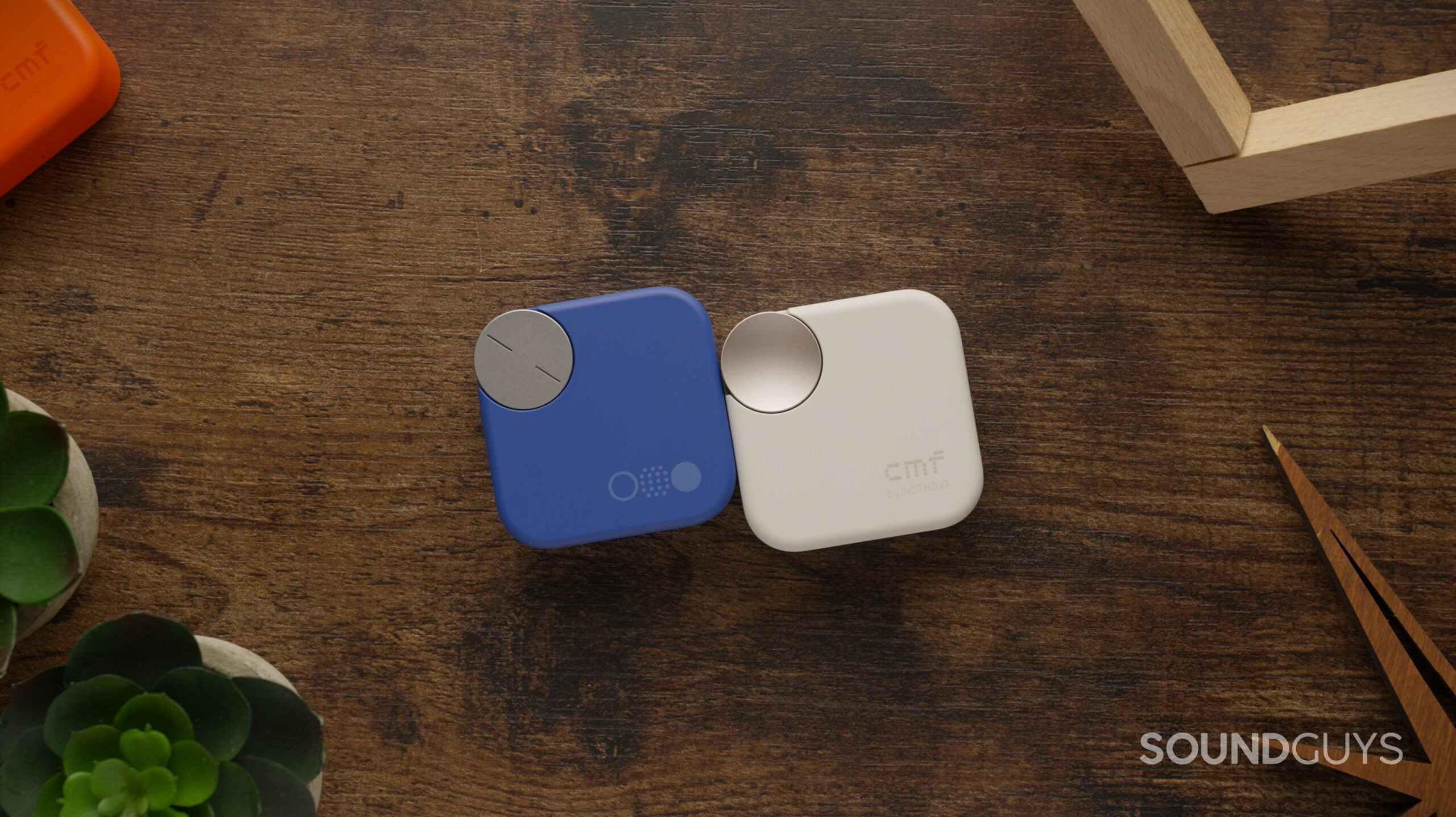
- CMF Buds 2 Plus ($59 at Amazon): If you’re looking for most of the Nothing Ear (3)’s performance at a significantly lower price, the CMF Buds 2 Plus delivers equally impressive sound quality and ANC performance for $110 less. While you’ll miss out on the premium metal build and Super Mic feature, you’ll get better battery life (10+ hours vs 5 hours), and LDAC support.
- CMF Buds Pro 2 ($59 at Amazon): For an even more budget-friendly option, the CMF Buds Pro 2 offers strong ANC and solid sound quality, especially for those who like more bass emphasis, with the added bonus of the unique Smart Dial on the charging case—a more practical control feature than the Super Mic. At $120 less than the Nothing Ear (3), it’s hard to justify the premium.
Both alternatives essentially give you the core listening experience of the Nothing Ear (3) without paying extra for cosmetic upgrades and a Super Mic feature that doesn’t quite deliver on its promises.
Nothing Ear (3) review: FAQs
Yes, the Nothing Ear (3) are well-suited for workouts with their IP54 rating for dust and sweat resistance, comfortable fit that stays secure during movement, and internal venting that relieves pressure during long sessions. However, the ANC struggles with wind noise, which might be an issue for outdoor running.
Yes, the Nothing Ear (3) work with both iPhone (iOS 13+) and Android (6.0+) devices. They support Google Fast Pair on Android, standard Bluetooth pairing on iOS, and Microsoft Swift Pair on Windows. Some exclusive features like Essential Space transcription are limited to Nothing phones.
Yes, you can use the Nothing Ear (3) individually. Each earbud can function independently, so you can use just the left or right earbud on its own while keeping the other in the case. Note that the Super Mic feature requires at least one earbud to be in your ear to function.
No, while they support LDAC codec for high-quality streaming up to 990 kbps 24-bit/96kHz, this is still compressed audio, not truly lossless. The earbuds use Bluetooth which inherently compresses audio.
Thank you for being part of our community. Read our Comment Policy before posting.